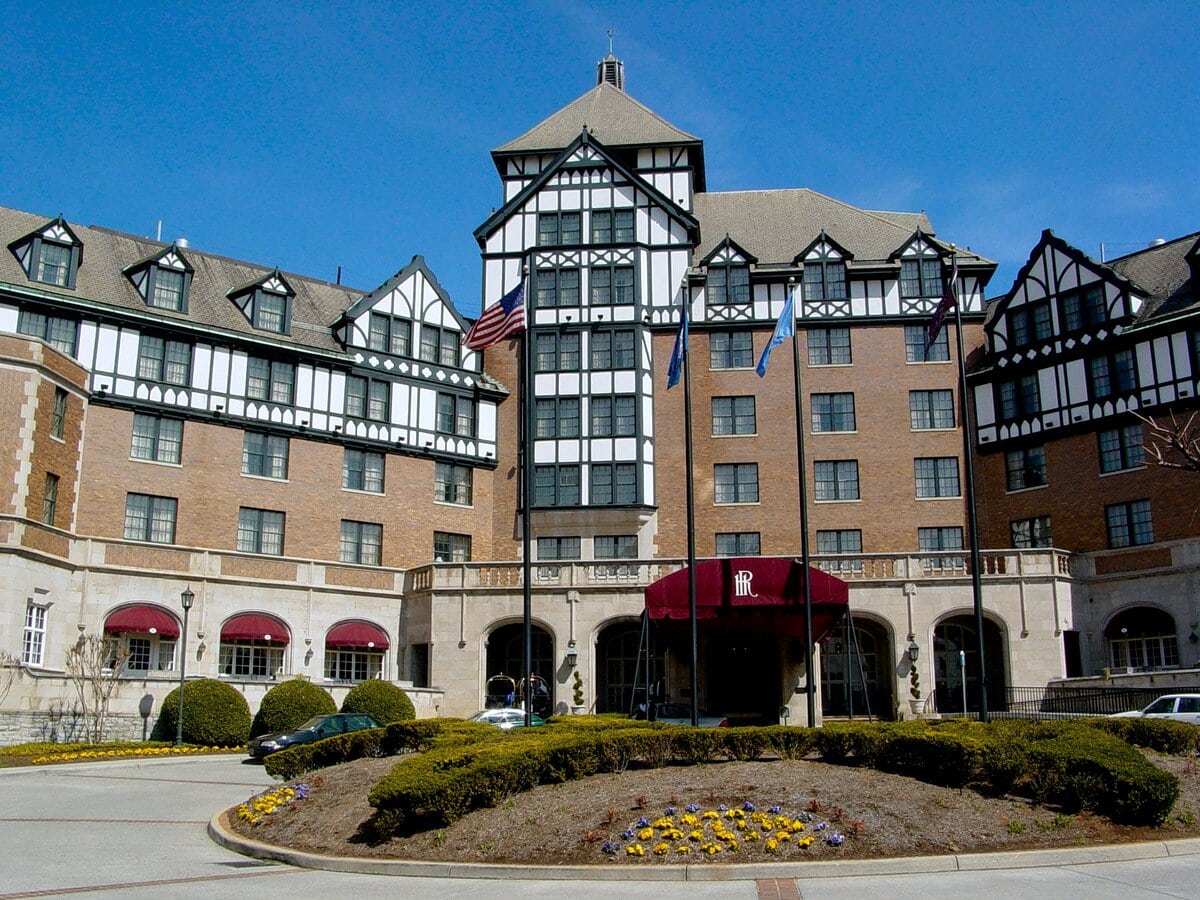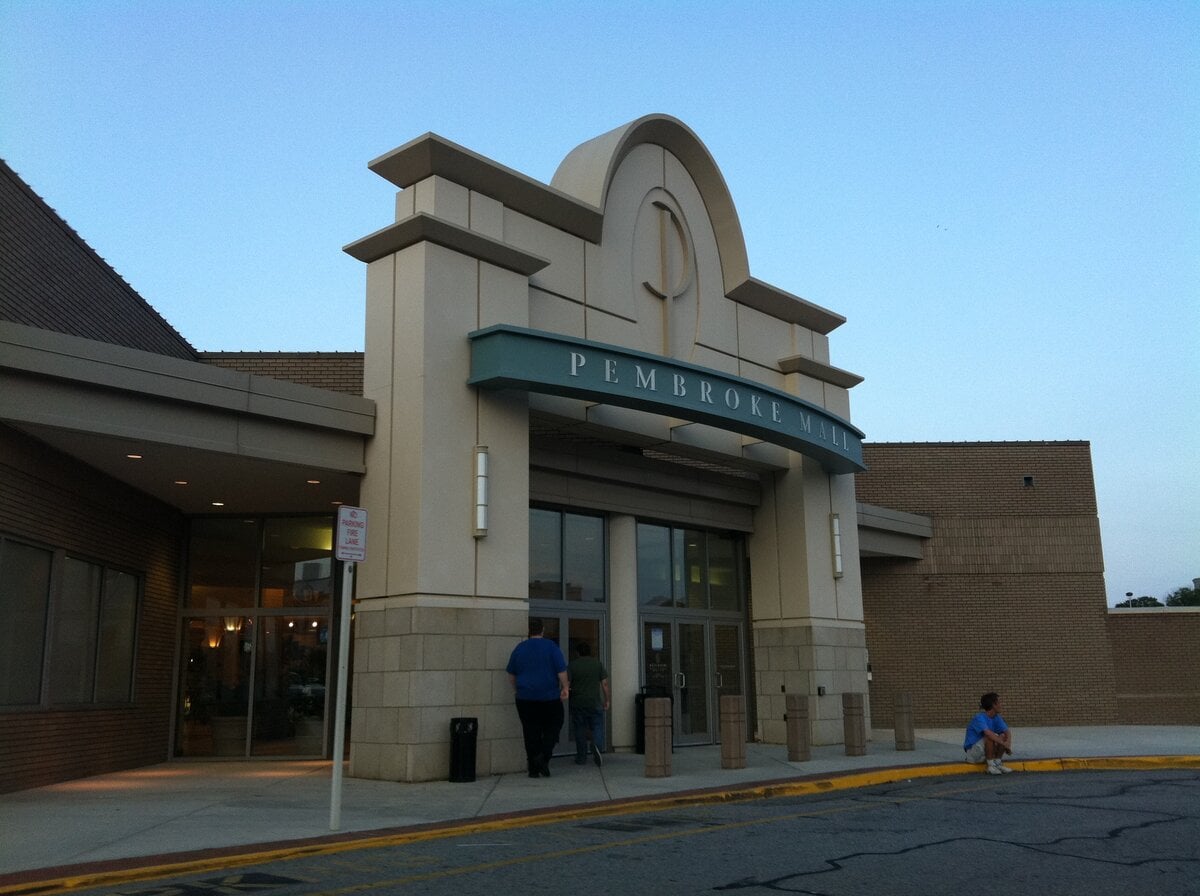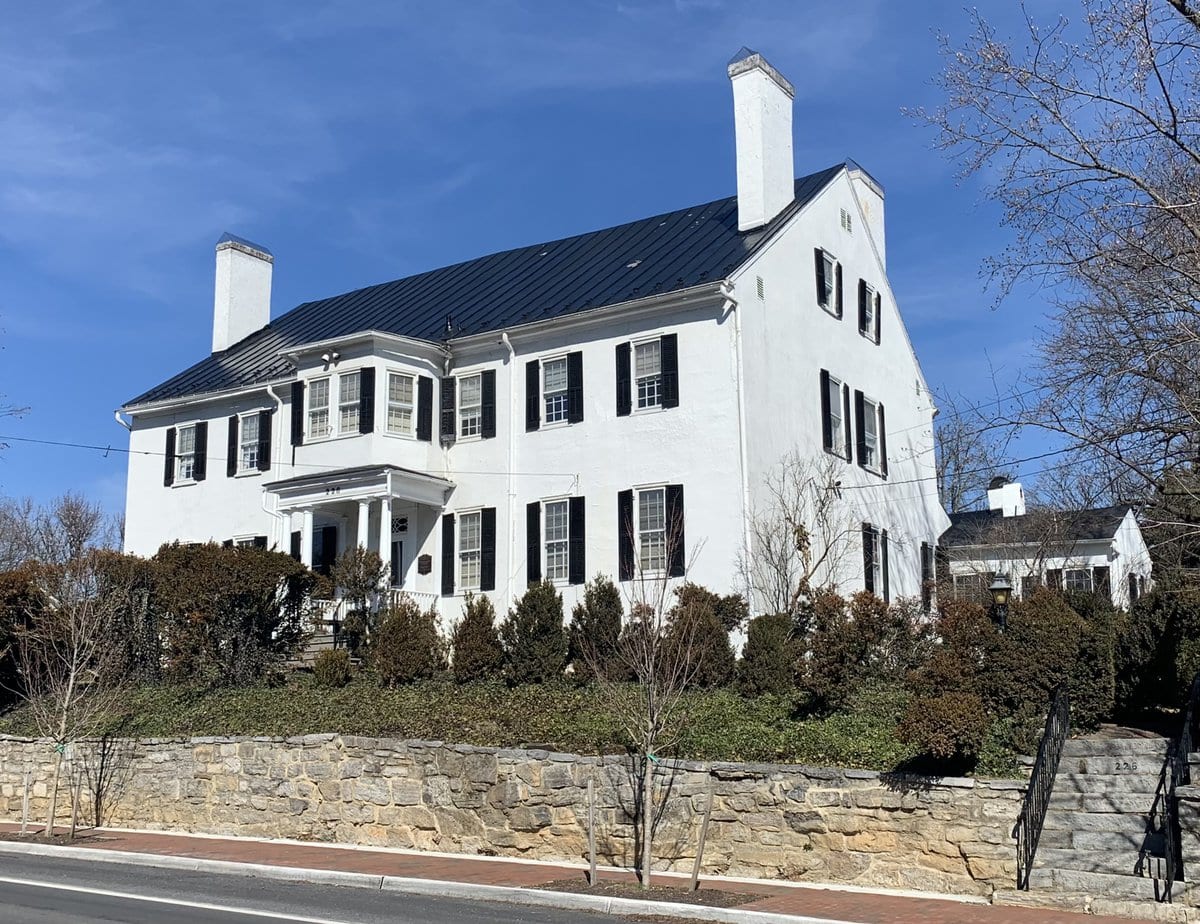Daniel Morgan House, a living remnant
A brass knocker shaped like a griffin guards the front door, its claws gripping a sword that hasn't moved in two centuries.
Inside, the hallway tilts by two inches from east to west, an architectural shrug from 1786 that never got corrected.
Upstairs, the floorboards are red mountain pine, cut so wide they'd be impossible to find today. They creak, but proudly.
And from the second-floor bedroom window, Daniel Morgan looked out over Winchester in his final days in 1802.
This is the Daniel Morgan House, a 17-room time capsule perched on a rise called Ambler Hill.
The east wing went up in 1786 for merchant George Flowerdew Norton, a man who traded tobacco and English goods when the town was still new.
The brick west wing came in 1800, built for a retired general who'd led riflemen at Saratoga and Cowpens.
He didn't live long enough to enjoy it. But his house endured wars, families, schools, and countless repairs.
Today, George and Jeannie Schember keep the place upright, sweeping the dust of two centuries off the stairs that lean toward the past.
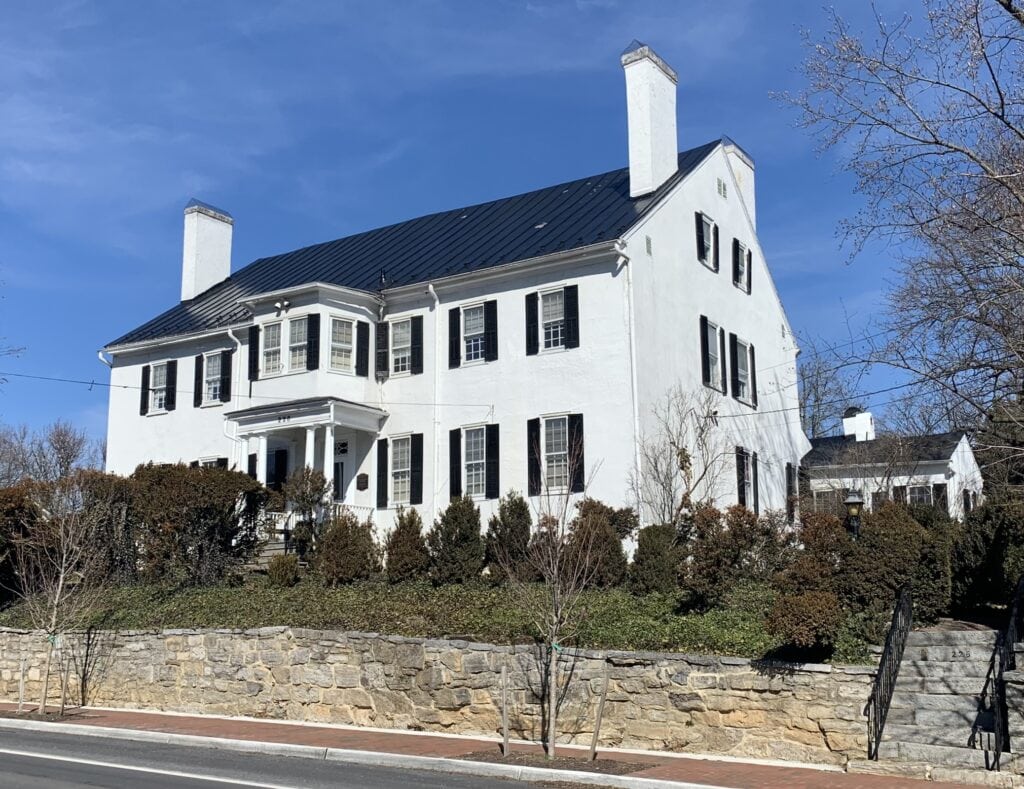
Timber, trade, and the first walls
Before Winchester had sidewalks, Norton was building a future in wood.
His timber-frame house rose in 1786 along what was then Lot 62, a standard-sized plot marked out in 1758.
The eastern section stood two and a half stories tall, practical and sturdy, facing the road that led toward the courthouse.
Norton was part of a merchant family with shops in Williamsburg, London, and Yorktown.
He was betting on trade and transport, goods moving through the Valley on wagons and trust.
The earliest record is his 1796 insurance declaration.
The paperwork valued the main house at $2,500, the summer kitchen at $250, an office at $150, and a stable at $100.
The sketch attached to it mapped out every building in neat ink lines.
The sums hint at ambition, not wealth.
Norton built for durability more than grandeur: paired chimneys, plain lintels, no wasted flourishes.
He could not know that within fifteen years, a Revolutionary War hero would sleep in his guest room and never leave.
The general comes home
By 1800, Daniel Morgan was tired of his plantation near Boyce, Virginia.
The hero of Cowpens had carried a bullet in his leg since 1777 and wanted peace more than fields.
He bought Norton's house, added a brick west wing, and planned to spend his last years within the city's reach.
The addition balanced the earlier timber section, giving the house seven bays and a symmetry that matched the mood of postwar Virginia.
Morgan moved in with his daughter, Nancy Neville, and her family.
Winchester had grown into a small hub of trade and politics, a place where old soldiers could still find conversation.
In the end, he mostly found pain. His health declined for two years.
His doctor, Conrad, lived nearby. So did his pastor, the Reverend William Hill.
On July 6, 1802, he died in the upstairs bedroom overlooking Amherst Street.
His coffin was carried out through the same door that still holds the griffin knocker.
His family stayed on, tending the house as the town around it inched toward the 19th century.
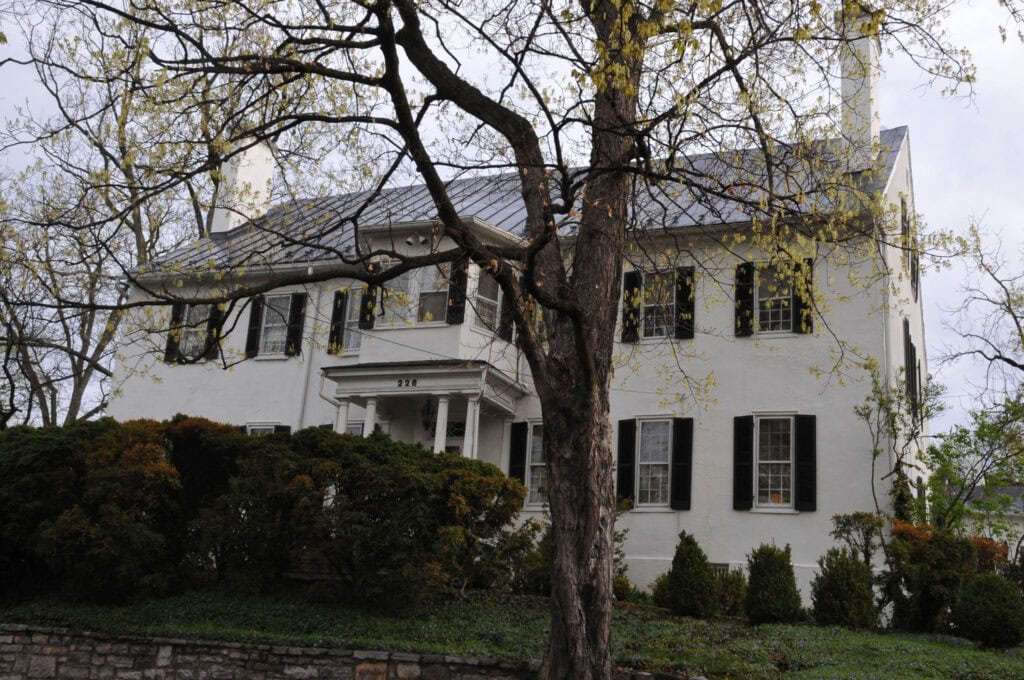
War and a house that waited
The Civil War came to Winchester like bad weather, again and again.
Armies changed sides, supplies ran out, and houses became hospitals.
The Daniel Morgan House survived the shelling and occupation, its thick walls making it practical for care.
Doctors used the rooms for the wounded, filling the hall with the smell of burned linen and lamp oil.
The house stood through it all, scarred but intact.
After the war, Winchester looked inward. Its people set about honoring their dead.
In the summer of 1865, this house hosted the meetings that fixed June 6 as the local Confederate Memorial Day and began the plan for Stonewall Cemetery.
The war had taken lives, but it also gave the Daniel Morgan House a strange second identity, as a civic parlor for remembrance.
When Judge Joseph Sherrard bought it in 1867, the ghosts were part of the deal.
Lessons in the back ell
The Sherrard family did not just live in the house; they filled it with voices.
In the late 19th century, the judge's daughters ran a small school in the rear ell, teaching children of neighbors and colleagues.
Among the pupils were Richard E. Byrd, who would one day fly over the South Pole, and Harry F. Byrd Sr., who would rule Virginia politics for decades.
It's a detail easy to miss in the records, yet it anchors the house to a later century of ambition.
By the 1880s, Winchester was shedding its rural quiet. Railroads brought more goods, and houses adapted to modern life.
The Morgans' old kitchen was rebuilt in brick around 1820 and by now connected to the main house by a passage.
Out front, a stone retaining wall kept the sidewalk neat.
Mantels changed, trim appeared, stair treads got replanned. It was a living property, not a museum.
Even as its famous occupant faded into textbooks, the house kept taking on new uses, the way a city learns to recycle its own bones.
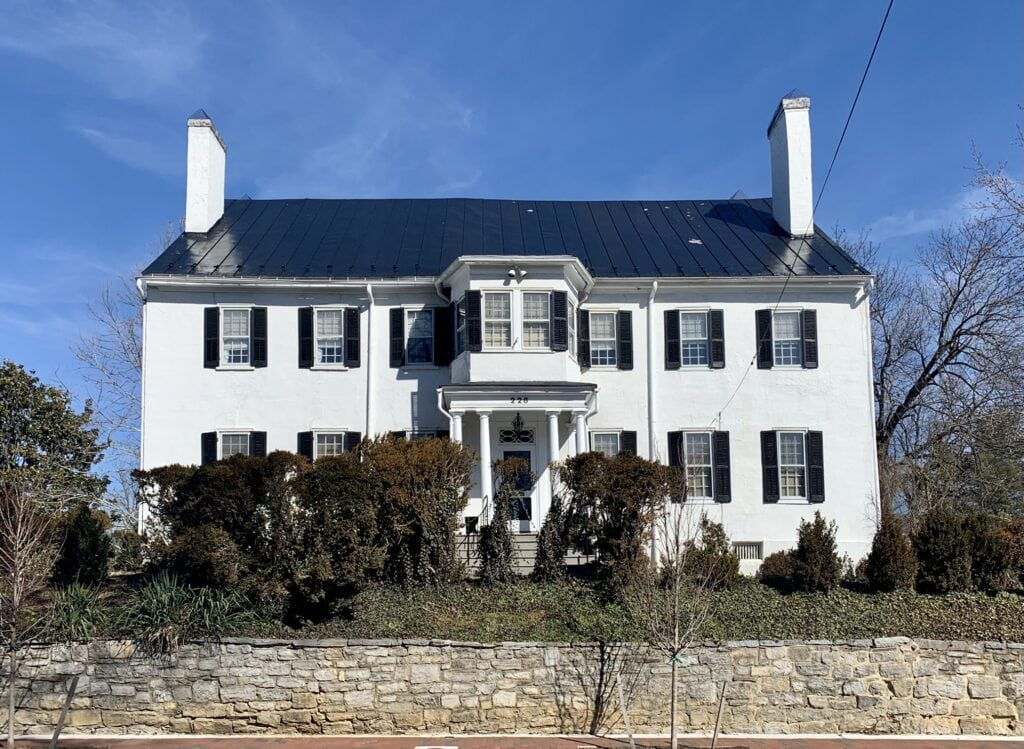
Owners, caretakers, and small repairs
After the Sherrards, ownership turned over quietly. In 1918, Elizabeth Love Massie took possession.
The 20th century brought no wars to the doorstep, only the slow work of maintenance.
By the time Dr. Hunter and Shirley Gaunt bought the place late in the century, much of its structure still followed the 18th-century plan.
In 1994, George and Jeannie Schember purchased it.
They didn't move in until 1996, giving time to restore what could be saved and replant what could grow.
They replaced a gravel parking lot with gardens and built a garage large enough to hold cars that never existed in Morgan's day.
Yet their focus stayed on fidelity. The main hallway kept its crooked floor.
The original Pennsylvania slide lock and key remained on the door.
They resisted the temptation to flatten history.
A house that refuses stillness
The Daniel Morgan House never became a museum or a monument.
It remains a residence, with crooked floors, red pine boards, and a griffin that keeps watch over the street.
It joined the Virginia Landmarks Register in 2012 and the National Register of Historic Places the following year.
Yet the listing changed nothing fundamental.
In a country that treats most buildings as temporary, this one resists erasure.
It carries the weight of trade, war, schooling, and simple domestic stubbornness.
As the nation edges toward its 250th birthday, the house stands as a quieter kind of monument - not to glory or grief, but to the slow work of keeping memory habitable.
Winchester keeps changing around it. The Daniel Morgan House keeps standing.




